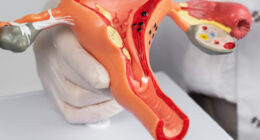Knee pain is one of the most common complaints among adults, affecting people of all ages. Whether it’s the result of an injury or wear and tear over time, knee pain can significantly impact daily activities. If you’ve been experiencing persistent knee pain, you may be wondering, “Why does my knee still hurt?” The truth is, that knee pain can be caused by several factors, and identifying the root cause is key to finding an effective treatment.
1. Osteoarthritis: The Leading Cause of Chronic Knee Pain
One of the most frequent culprits of long-term knee pain is osteoarthritis (OA). This condition occurs when the cartilage in your knee joint gradually breaks down over time, leading to friction between the bones. As a result, you may experience stiffness, swelling, and discomfort. OA typically affects older adults, but it can develop earlier due to factors like previous injuries or obesity.
To manage OA, a combination of weight management, physical therapy, and anti-inflammatory medications may be helpful. In more severe cases, your doctor may suggest joint injections or surgery.
2. Ligament Injuries: More Than Just a Twisted Knee
If you’ve experienced a sports injury or sudden trauma, your knee pain might be related to a ligament injury. The knee contains four main ligaments: the anterior cruciate ligament (ACL), posterior cruciate ligament (PCL), medial collateral ligament (MCL), and lateral collateral ligament (LCL). Tears or strains to any of these ligaments can result in persistent pain and instability.
Treatment for ligament injuries typically involves rest, ice, compression, and elevation (R.I.C.E.). Severe tears may require surgical intervention followed by rehabilitation exercises to restore strength and stability to the knee.
3. Patellar Tendonitis: Inflammation of the Tendon
Patellar tendonitis, commonly known as “jumper’s knee,” is an overuse injury that causes inflammation of the tendon connecting the kneecap (patella) to the shinbone. This condition is especially common among athletes who engage in high-impact sports like basketball or running.
If you’re dealing with patellar tendonitis, rest is essential. Ice therapy, stretching, and strengthening exercises can also help alleviate symptoms. In some cases, physical therapy may be needed to help you recover fully.

4. Bursitis: Inflammation of the Knee Bursae
Knee bursitis is another common cause of chronic knee pain. It occurs when the small, fluid-filled sacs (bursae) that cushion the knee joints become inflamed due to repetitive motion, injury, or prolonged pressure on the knee. People who kneel frequently, like gardeners or construction workers, are at an increased risk.
Treatment often involves rest, ice, and anti-inflammatory medications. If bursitis is severe, your healthcare provider may recommend draining the bursa or injecting a corticosteroid to reduce inflammation.
5. Meniscus Tears: Damage to the Knee’s Cushioning
The meniscus is the cartilage in your knee that acts as a shock absorber, cushioning the bones and preventing friction. A meniscus tear, often caused by twisting or lifting motions, can lead to ongoing pain, swelling, and difficulty moving the knee.
Treatment for meniscus tears can vary depending on the severity of the injury. Minor tears may improve with rest and physical therapy, while larger tears might require surgery, especially if the tear prevents the knee from moving properly.
6. Patellofemoral Pain Syndrome: A Misaligned Kneecap
Patellofemoral pain syndrome (PFPS), also known as “runner’s knee,” is a condition that causes pain around the kneecap, especially when squatting, kneeling, or climbing stairs. This is often due to misalignment of the patella (kneecap), which can result from muscle imbalances, overuse, or improper footwear.
Treatment for PFPS typically includes strengthening exercises for the quadriceps and hamstrings, as well as stretches to improve flexibility. Custom orthotics or knee braces may also be recommended to help realign the kneecap.
7. When Should You See a Doctor?
If your knee pain is persistent, worsens over time, or is accompanied by swelling, redness, or inability to bear weight, it’s essential to consult a healthcare professional. Early diagnosis can lead to more effective treatment, reducing the risk of long-term complications.
Conclusion
Knee pain that doesn’t improve over time can be frustrating and debilitating. Whether it’s caused by osteoarthritis, a ligament injury, tendonitis, bursitis, meniscus tears, or patellofemoral pain syndrome, identifying the root cause is essential to finding the right treatment. Remember, rest, rehabilitation, and proper medical care are key to managing knee pain effectively and improving your quality of life.
If you’re still experiencing knee pain after trying at-home remedies, don’t hesitate to speak to a doctor about your options for more advanced treatments. Your knees are vital to your overall mobility, and with the right care, they can continue to support you in your everyday activities.









